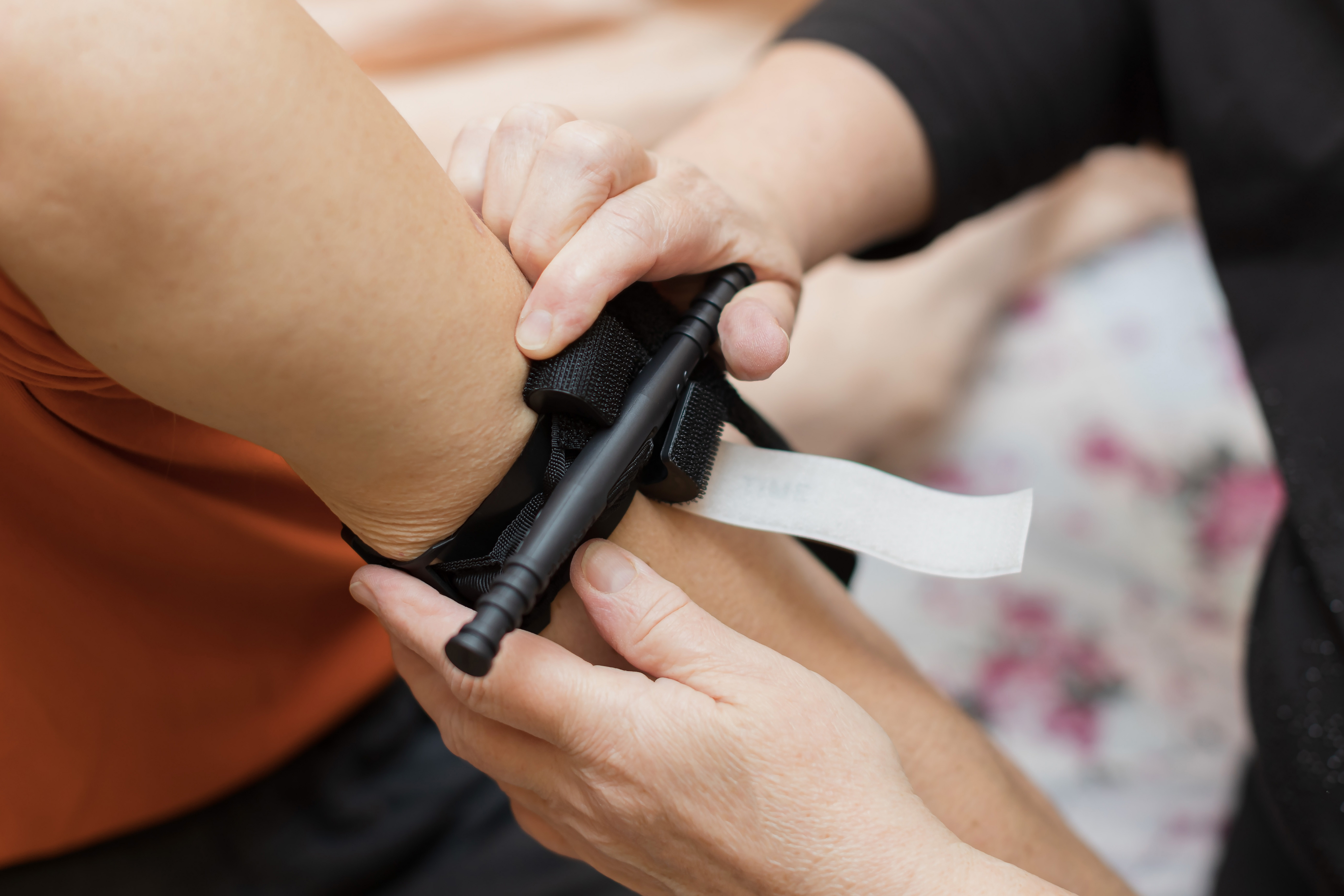
The use of the tourniquet in first aid
Published Jun 20, 2024
The use of the tourniquet is now back into the first aid syllabus. This is due to the change in the methods adopted when using a torniquet.
Historically, once a tourniquet was placed on an individual it would be released every 10-15 minutes to allow blood to flow over the area that had been blood-deprived to rejuvenate the tissue. This is because without blood, the tissue would have started to die.
This seemed a good idea at the time as allowing blood to rejuvenate the tissue was in theory a good thing. However, during the time the tourniquet was in place and tightened, there would have been a build-up of toxins in the blood. When, the tourniquet was released it would allow for the tissue to be rejuvenated but also for the toxins to enter the main circulatory system.
As a result, this could lead to toxic shock or, in the worst-case scenario, the collapse or breakdown of the kidneys. The kidneys remove waste from the blood and return the cleaned blood back to the body. This is done by removing waste products and excess fluid through the urine. Kidneys also remove acid that is produced by the cells of the body and maintain a healthy balance of water, salts and minerals, such as sodium, calcium, phosphorus and potassium,
One of the challenges for the kidneys is that although they are effective at removing many toxins from the blood, some are difficult to then excrete into the urine. This means they accumulate in the kidneys and as their concentration increases, they can seriously damage the kidneys.
If a casualty has suffered a life threatening (catastrophic) bleed, a tourniquet is placed on the casualty around the impacted limb, about 2-3 inches (5-7 centimetres) above the source of the bleeding. The tourniquet is always placed between the source of the bleeding and the heart. For example, if the wound is on the forearm, apply the tourniquet to the upper arm. Never place a tourniquet on either a knee or elbow as you cannot tighten it enough to stop the bleeding.
Medical journals recommend two hours as the time limit for tourniquet application after which muscle injury, vascular injury, nerve damage and skin necrosis may be permanent. The tourniquet is now not released; therefore, it is vitally important that the emergency services are mobilised as quickly as possible.
To identify that the casualty has a tourniquet in place it is vital that everyone that has contact with the casualty knows that the casualty has suffered a life-threatening bleed. Therefore, a big T is written on the forehead of the casualty along with the time in which the tourniquet was placed on the individual. This gives the emergency services a quick and easy way of identifying the injury and the time scale.
Myth 1: Tourniquets are a last resort and should only be used after all other means of haemorrhage control has been exhausted.
Wrong: An arterial limb haemorrhage can kill in a matter of minutes; a tourniquet should be your first treatment.
Myth 2: If you use a tourniquet, they will lose that limb.
Wrong: Over the last twenty years the Joint Theatre Trauma Registry has logged data points proving that tourniquets are safe, effective, and do no result in limb loss.
Myth 3: A properly applied tourniquet should not be uncomfortable.
Wrong: A statement put forward by the Faculty of Pre-Hospital Care at the Royal College of Surgeons stated, “ A properly applied tourniquet is painful; a casualty may require significant pain relief to apply the tourniquet to the appropriate pressure” A tourniquet should be tightened until bleeding stops.
Myth 4: Tourniquets do not work on two bone compartments.
Wrong: The primary determinant of effectiveness in a well-designed tourniquet is the ratio of limb circumference to device width. A tourniquet placed at a narrow part of the limb requires less pressure to achieve occlusion than the same tourniquet placed at a vast portion of the limb, suggesting that tourniquets are more effective when placed as low (distal) on the limb as possible.
Myth 5: Tourniquets can be left on for more than 8 hours or longer.
Wrong: Continuous application for longer than two hours can result in permanent nerve injury. Muscle damage is nearly complete by 6 hours, likely requiring amputation.
Source: Dave Brush
Faculty of Pre-Hospital Care, The Royal College of Surgeons of Edinburgh, Position statement on the application of Tourniquets, (2017), 1-2.
The Joint Trauma System (JTS) Clinical Practice Guidelines (CPGs)